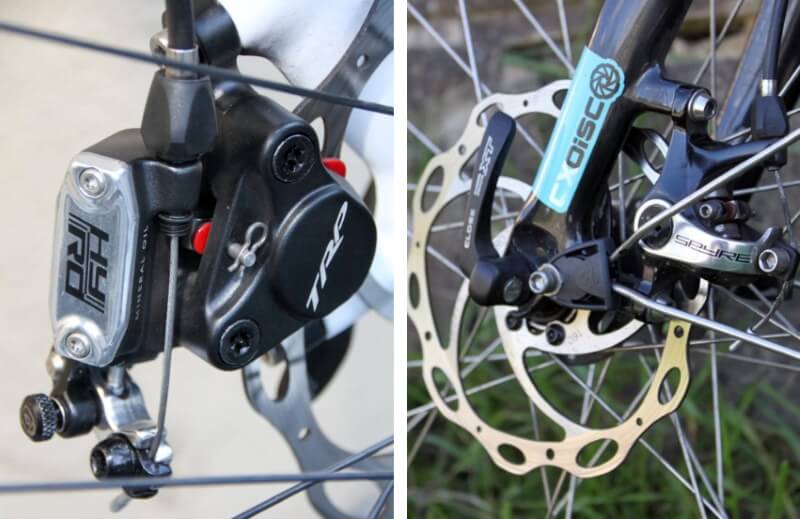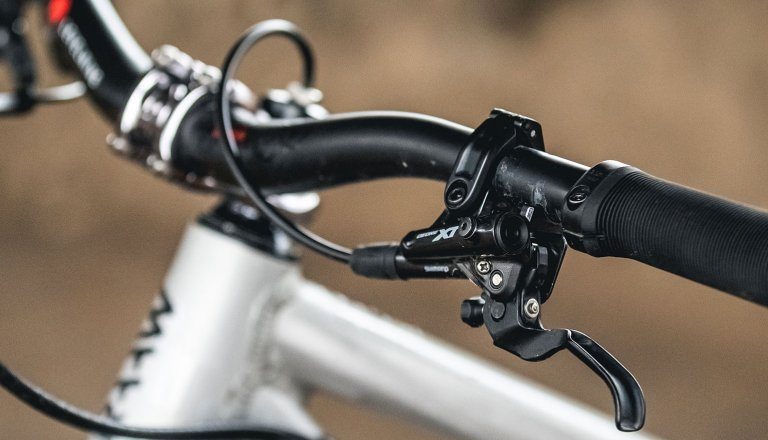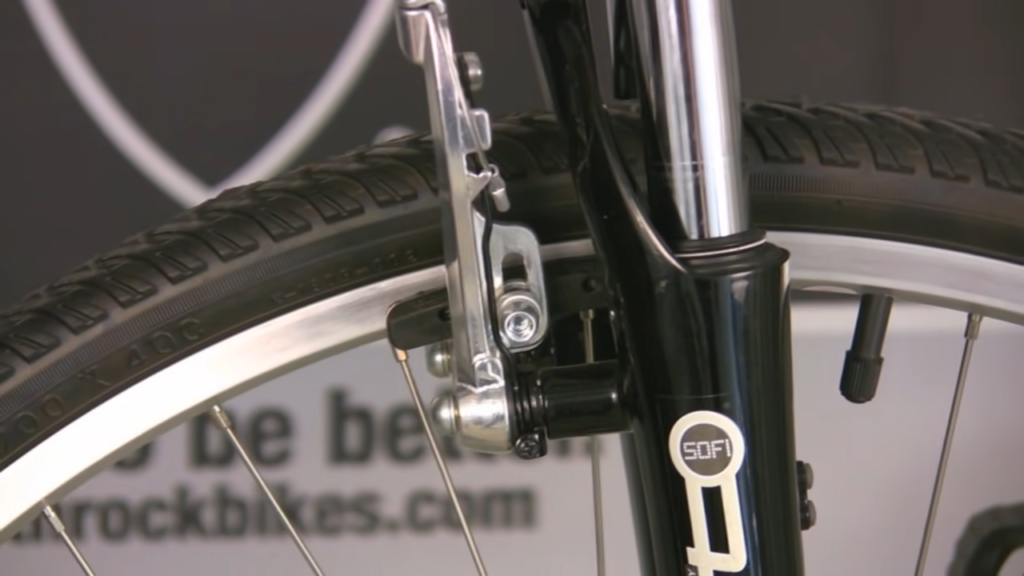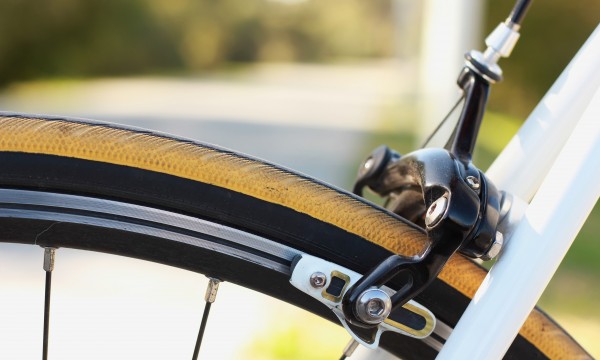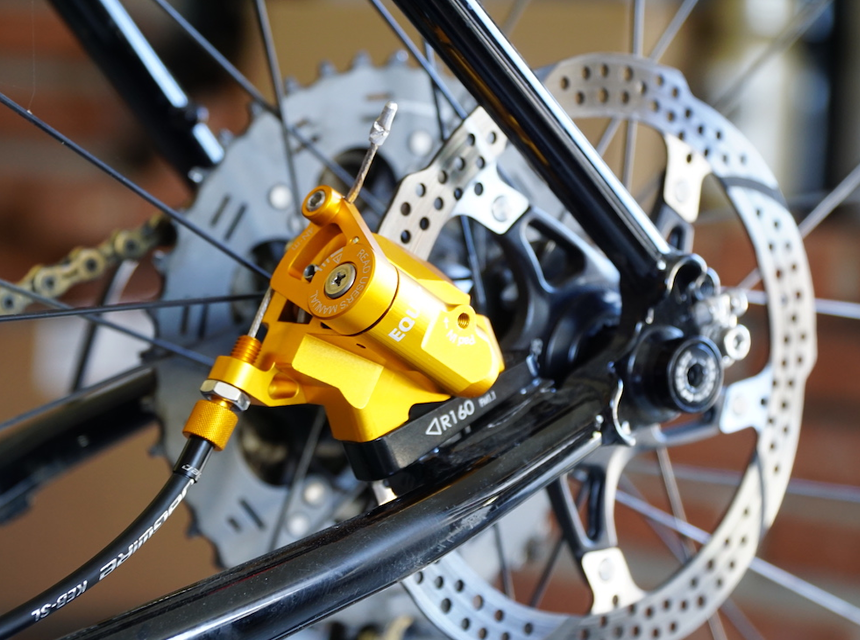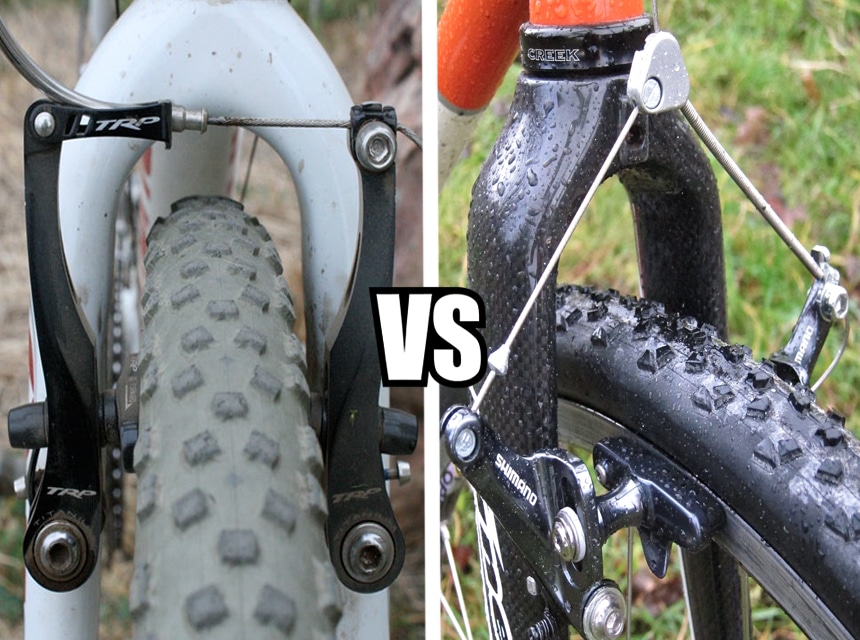- Trails
-
Bikes
-
Gear
-
Tips & Tricks
-
About us


The thrill of riding a bike can carry you through your whole life. From those first wobbles when you finally take your training wheels off to the speed you get racing down a mountain, being on a bike is one of life’s true pleasures. But as anyone who has ridden a bike knows, eventually you need to stop. There are many types of bike brakes but most inexperienced riders don’t take much notice of them. They simply assume they are there.
The aim of our article is to explain the different types of bike brakes so that you have a better understanding of how your bike works. Not all braking systems work the same and if you are starting to become a serious bike rider, it’s important to know all the inner mechanics of it. This way you will be safer, either out on the road or out on the trail.
Have you ever really thought about bike brakes, apart from the fact that you know they need to exist? Bike brakes work to slow your bike down and then eventually stop it. Whether you need to slow as you maneuver a steep turn on a trail or are approaching a red light while riding on a road, bike brakes are essential. Let’s look at the different parts that are included in bike brakes.
For brakes to work, there needs to be friction. Essentially, brakes apply friction to a spinning wheel. A little bit of friction will slow the wheels down while a lot of friction will stop them from moving completely.
How this friction is applied is why there are different types of brakes. Basically, there are three types of systems, namely disc brakes, drum brakes, and rim brakes. We’ll explain these three systems in detail within the next section.
In order for the brakes to engage on your wheels, you need to engage them. This is done in two ways. The first way, which is more common on children’s bikes, is through the use of the pedal. When you pedal forward, you propel the wheels. However, if you pedal backwards, it will connect to the drum brakes on the wheels.
The more common method, which is used in most adult bikes, is by pressing on a brake lever on the handlebar. There are normally two levers, one on either handlebar. In turn, these connect to the brakes, with one lever operating one set of brakes on the front wheel and the other lever operating the back wheel brakes.
Those that have two handlebar breaks may want to test out how to operate them before going out. The issue that arises, especially by those new to bike riding, is that operating the front wheel brake only will almost always end up in an accident.
If you press down hard on the front brake, your bike will start to skid as the back wheel is still in motion. Then, as the momentum stops in the front, the bike will keep going. The best-case scenario is that you simply skid off to the side and can place your foot down for balance. The worst-case scenario is that you actually flip right over the handlebars of your bike.
Always try to use both brakes when biking. This will allow the momentum to gradually decrease and won’t wear out either part. The more control you have over your brakes, the more control you have over your bike and the safer you will be.
There are three components to a bike braking system. No matter how your bike is set up, they will have these three areas.
There are four materials that are most commonly used for brake pads. While they operate in the same capacity, by putting pressure on the wheel to stop it from being in motion, the different materials work in their own way.
The most common type of brake pads, they are used for most occasional cycling. The resin is actually made of organic matter, including rubber, glass, and fibrous binders. Then, they are bound together with resin for a more durable construction. A benefit of resin brake pads is that they don’t create a lot of noise. However, they are not as durable as other options so you can expect to have to replace them often.
Even though ceramic brake pads are quite similar the metallic version, they are still not as popular. They are a good choice, however, as they don’t produce as much heat and thus have a bit of a longer life.
Made from grains of metal that are then bonded together at a high pressure, this is a versatile and reliable brake pad option. They are great for extreme conditions and can usually be found on mountain bikes. Interestingly, metallic brake pads can produce more heat than other types of pads but they have a longer lifespan than other options.
A hybrid option, these brakes are not as popular but have a few more benefits than resin brake pads. They can stop faster than resin pads and have a longer life span.
We hope you’re still with us on all the bike brake terminology. Now that we understand the system of braking a bit better, it’s time to look at actual different types of bike brakes.
| Pros | Cons |
| Powerful braking | Heavy |
| Weather-resistant | More expensive that other brake types |
| More efficient when compared to other brake types | More difficult to maintain |
| Durable brake pads | Make the aerodynamic performance worse |
Unlike other types of bike brakes that apply pressure to the rims of your tires, disc brakes have an extra component. While you will start out in the same way as other brakes, that is squeezing a lever on your handlebar, the pressure is then applied to rotors in the middle of your bike wheels. The result is that you don’t need to apply as much pressure and yet you get more power.
The most common type of disc brake is the mechanical brake. This system uses a cable to pass the information from when you squeeze your brake lever to when the bike actually stops. The rotor that is connected to the brake will come in different sizes. A larger motor means the braking surface is larger and your stopping motion will be smoother.
Another benefit of mechanical disc brakes is that they are very efficient. Even though the motor and the process create a lot of heat, the large nature of the motor means more heat is dissipated over a larger surface.
Mechanical disc brakes are a favorite among downhill mountain bikers. They are easy to manipulate and you have a greater depth of stopping control. Furthermore, because the brakes are situated on the side of the wheel, you don’t have to worry as much about mud clogging the brake area. This is now the standard type of brake on mountain bikes. Those wanting to upgrade their disc brakes should consider the Farbetter Bike Disc Brake Kit. They rotors are perfect for BMX and mountain bikes and they are fairly easy to install.
A step above mechanical disc brakes, hydraulic brakes will give you more power although they do cost more money.
Whereas most other braking systems use cables to transfer the force from when you press on the brake leaver, hydraulic brakes use a piston cylinder system. Inside this cylinder is brake fluid. If you have any experience with motorcycle brakes, then it will be easy to understand this system.
The inclusion of braking fluid means a lot more maintenance with these brakes. While other types of systems on bicycles necessitate you changing the brake pads and cleaning the brake area, a hydraulic disc system means you need to regularly change the fluid.
Experts recommend changing the fluid every six months and more so if you a regular biker. This means more money output.
The one positive aspect about hydraulic braking systems, in addition to their superior performance, is that they actually aren’t heavier than mechanical systems.
| Pros | Cons |
| Perfect for mud and snow | Heat up rapidly |
| Suitable for small wheels | Heavier than rim and disc brakes |
| Perform well in wet conditions | Not so robust |
| No need to maintain often |
Overall, drum brakes are fairly easy to understand as they use a system of cables and levers. While they aren’t as common, as other types of brakes, they are still very useful. Drum brakes have a piece of flexible metal that is tightened when you press on the brake lever.
Drum brakes are often used for cyclists that like to go out in all sorts of weather conditions. They are very durable, especially when exposed to dirt and rain. If you aren’t mechanically inclined, they are also a good option as they don’t need as much maintenance.
The downside with drum brakes, however, is that they can be quite heavy, which is a problem if you are focused on speed.
The most popular type of drum brakes are coaster brakes. Unlike other systems that use cables, you actually control coaster brakes by backpedaling. City bikes that have a single speed will often use coaster bikes. Because of their construction, they require virtually no maintenance.
| Pros | Cons |
| Affordable | Not much stopping power |
| Easily maintained | Won’t suit for heavy weather |
| Require zero effort to find replacement parts | Easily heat up |
| Easy on a wheel | Not so durable |
One of the smallest options available, rim brakes hold on to the rims of the wheels, hence the name. They are placed on both the front and read wheels of a bike and are controlled via the brake levers on the handlebars.
Through a system of cables, rim brakes will engage to slow the bike down. This is a nice, light option and is frequently used by road cyclists. Those who are interested in competitions can check out these options for the best triathlon bikes for beginners.
Caliper brakes use a single bolt to attach themselves to the bike rim. They have a cable that includes its own mechanisms. One advantage of caliper brakes is that they have a wider distance between the two pads. If you have a road bike with slightly wider tires, then this is a good option.
Similar to caliper brakes, cantilever brakes also have two parts to them, one on either side of the bike rim. Those interested in cyclocross will have cantilever brakes as they have a very strong stopping force.
This type of braking system is closely related to cantilever brakes and the name, V-brakes, is actually a brand that was created by the company Shimano. This style of brakes is very powerful. There is a wider clearance between the brake housing and the wheel, which is perfect if you are traveling in muddy areas. For example, the SHIMANO BR-T4000 Front V-Brake has a large mudguard that allows mud and debris to move through the area so it won’t jam the brakes.
They are often used on off-road bikes.
There are many different types of bikes and each has its own abilities. Road bikes have thin tires and aerodynamic frames. Mountain bikes have thicker tires and sturdy frames. Likewise, each will have an appropriate braking system.
When you purchase a new bike, you should be aware of what your primary purpose will be. Then, be sure to talk to a bike expert who can match your bike with your wants. If you are looking online for a bike, the process can be a bit more complicated. That’s why you want to know about all the parts, including the brake system, so you won’t be disappointed when you get on your bike.
If you do find a bike that you love but don’t think the braking system will fit your needs, you can always swap parts out. This can be a bit difficult, however, and you may need to talk to a bike mechanic. The point, however, is that bikes are versatile and the more you know about their parts, the better you can tailor-make a bike so that it is efficient, safe, and fun to ride Trusted Source Bicycle Safety | Arizona Governor's Office of Highway Safety GOHS provides funding to agencies throughout Arizona to promote bicycle safety, here are some of those programs. gohs.az.gov .
When you get on your mountain bike, you are anticipating all the elements. This includes a lot of mud. Brake systems that have extra clearance are key when it comes to mountain biking. Disc brakes are the most widely used for mountain biking. They are attached to a rotor on the side of the wheels and thus you don’t have to worry about mud and other debris jamming up your system.
V-brakes, which are a type of rim brakes, are also a solid option for mountain biking. The larger clearance means there is more room for mut and dirt to pass around the brake pads. Mountain bikes can be quite the investment, so if you are looking for options that have solid braking systems, try this list of the best mountain bikes under 600 dollars.
For road travel, you want slim brakes that won’t take up any extra space or add extra weight. They also need to be reflexive so that you can take corners as quickly as possible while still being safe.
Rim brakes are the best for road and gravel bikes. They sit close to the rim of the bike and will respond well to light amounts of pressure. If you are new to road biking, consider this list of the best road bikes to see what options are currently out there.
Please have a look at our question section. The frequently asked questions may help you understand the bicycle brakes types a bit more. Even if you are just starting out with biking, or want a healthy and fun activity Trusted Source Cycling - health benefits - Better Health Channel Cycling can help to protect you from serious diseases such as stroke, heart attack, some cancers, depression, diabetes, obesity and arthritis. www.betterhealth.vic.gov.au , knowing more about what you’re riding on is part of the excitement.
As brakes are an integral part to your bike, you want to maintain them on a regular basis. For serious cyclists, aim to inspect them every three to six months. This includes cleaning them, testing them, and checking for signs of wear and tear.
For occasional cyclists, once a year should be good. Most bike riders pause over winter so spring is a good time to check on your bike to see if anything needs to be cleaned or replaced. Remember, though, that bikes are some of the most important safety areas while riding your bike. If you suspect any sort of issue, stop riding and check them right away.
Squeaky bike brakes can mean many different issues so the first task is to assess the problem. Sometimes, having squeaky brakes just means they are dirty. Start by purchasing a bike brake cleaner and giving the area a good cleaning. You can also use isopropyl alcohol, which can be found in most drug stores. For a deep clean, remove all the brake parts, but if you are in a hurry, you can still clean the brakes while they are still on the bike.
Oil and other gunk can build up within the brakes, which is usually the cause of the squeakiness. If you now have clean brakes but they are still squeaky, it’s best to take your bike to be looked at by a professional. They may see a different issue or they may recommend replacing them altogether.
If you ride your bike a lot, you should be changing your brake pads once a year. Over time, brake pads can harden and when they aren’t flexible enough, they won’t mold to your bike. Furthermore, heavy use of your brake pads means they will wear down and thus won’t be as effective.
An annual check-up is always recommended with a bike and you may find that when you’re replacing your brakes you need new bike wheels. However, they are not linked. Most cyclists will get a few years of life out of their bike wheels, versus only a year from their brakes. Always inspect your wheels for damage or wear and tear. And, if you have had to patch a few holes in your tires, it might be best to replace them all together for a safer ride.
Biking is a fun, cool experience. With a bike you can travel great distances, get an instant adrenaline rush as you cruise downhill, and have an amazing workout. There are many parts to a bicycle and while they are sometimes forgotten, without a braking system, you simply won’t be safe. Bike brakes work by either pedaling backwards or by pressing on a lever on your handlebar. Then, through a series of cables, pressure is applied on your wheel from a brake pad. There are many types of bike brakes and while all will help with safety, some are better suited to different types of cycling. We hope you have a bit more knowledge about bike brakes and which one will work best with your cycling needs.
